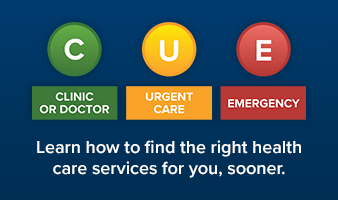It's time for polarizing positions on cannabis to go up in smoke
By Daniel Dacombe
Published Monday, January 18, 2021
Weedless Wednesday, which takes place on January 20 as part of National Non-Smoking Week, is a fitting time for hardcore opponents and advocates of cannabis alike to set aside deeply entrenched positions in favour of an evidence-based discussion.
Although we've come a long way since the campy 1936 anti-marijuana film "Reefer Madness" and its over-the-top warnings of "a new and deadly menace lurking beyond closed doors," there are still opponents who embrace old-school approaches over facts. On the other side of the spectrum are some cannabis activists who may have difficulty acknowledging the known risks associated with cannabis use and who claim it as a natural, non-additive cure for everything from depression to cancer.
My advice has always been to throw out the strident, moralistic arguments on both sides of the debate in favour of the current scientific evidence.
In years past, prevention messaging about cannabis was both exaggerated and punitive. For example, scientific evidence has failed to uphold the "gateway drug" hypothesis - the belief that cannabis use always or usually leads to use of "heavier" drugs. The reality is most users of cannabis will not go on to use drugs like heroin, cocaine, or methamphetamine.
It pays to remember that while cannabis has been legal in Canada since late 2018, "legal" is not synonymous with "safe." According to the Canadian Centre for Addiction and Mental Health (CAMH), cannabis use can have both short and long term effects on health, particularly for adolescents whose brains have yet to fully develop (something that typically occurs between the ages of 21 and 25 years of age). Cannabis can affect your thinking, physical coordination, and increase your risk of accidents, injuries, reproductive issues and mental health problems.
With increased use comes a higher risk of schizophrenia, anxiety disorders, depression, and amotivational syndrome, a psychiatric disorder characterized by emotional states such as detachment, blunted emotion and drives, reduced memory and attention, disinterest, passivity, apathy, and a general lack of motivation.
Contrary to popular opinion among its supporters, cannabis use can also result in dependency. In a comprehensive review of 20 years of research, the Washington County (Oregon) Department of Health reported in 2014 that research clearly demonstrates that approximately nine per cent of those who experiment with marijuana will become addicted and that this number goes up to 17 per cent for those who start using marijuana as teenagers and up to 50 per cent for those who smoke marijuana daily.
Today, the conversations we have about cannabis should be similar to those we have about alcohol, especially in terms of harm reduction. Parents should lead by example and use facts over hyperbole when discussing these topics with their children. When I was in high school, the messaging was, "don't do it or you're going to die." Clearly, that kind of messaging won't work today. Parents are encouraged to take an evidence-based approach, avoiding catastrophic and unscientific language and perspectives.
The CAMH offers these 10 evidence-based recommendations for reducing the health risks associated with cannabis use:
- Remember that every form of cannabis use poses risk to your health. While the only way to completely avoid these risks is to abstain, lower-strength and less-frequent use will bring lower risks.
- The earlier in life you begin using cannabis, the higher your risk of serious health problems. Teenagers, particularly those younger than 16, should delay using cannabis for as long as possible.
- Higher-strength or more powerful cannabis products are worse for your health. If you use, choose low-strength products such as those with a lower THC content or a higher ratio of CBD to THC.
- Don't use synthetic cannabis products. Compared with natural cannabis products, synthetic cannabis products are stronger and more dangerous.
- Smoking cannabis (smoking a joint, for example) is the most harmful way of using cannabis because it directly affects your lungs. Non-smoking options like vaping or edibles are safer for your lungs. (Keep in mind that these alternatives aren't risk-free.)
- If you choose to smoke cannabis, avoid inhaling deeply or holding your breath. These practices increase the amount of toxins absorbed by your lungs and body and can lead to lung problems.
- Try to limit your use as much as possible. The more frequently you use cannabis, the more likely you are to develop health problems, especially if you use on a daily or near-daily basis.
- Cannabis impairs your ability to drive a car or operate other machinery. Don't engage in these activities after using cannabis.
- Pregnant women and people with a personal or family history of psychosis or substance use problems should not use cannabis at all.
- Avoid combining any of the risky behaviours described above or using other addictive substances in conjunction with cannabis. The more risks you take, the greater the chances of harming your health.
For more information about cannabis, and how to talk with your kids, or your loved ones, visit the Canadian Centre on Substance Use and Addiction at ccsa.ca, the Centre for Addiction and Mental Health at camh.ca/ or the Addictions Foundation of Manitoba at afm.mb.ca.
If you need help controlling your cannabis use, contact your doctor or another health professional, or the Manitoba Addiction Helpline at 1-855-662-6605.
Daniel Dacombe is Acting Supervisor of the Prevention Education Team with the Addictions Foundation of Manitoba and has nearly a decade of clinical experience in the addictions field.

